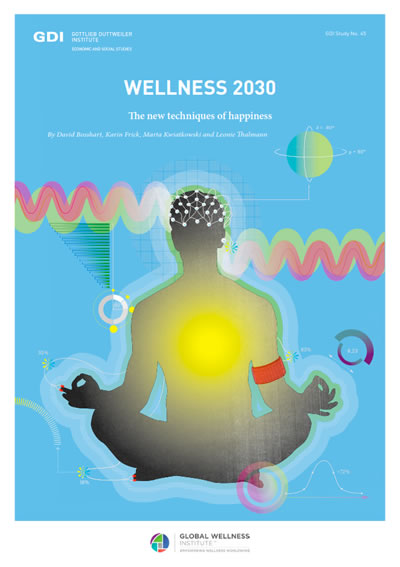Emotion recognition technology, or artificial intelligence, could soon be used as the ultimate employee satisfaction tool, registering employee emotions in a way that can help companies measure real-time engagement with every aspect of the workplace.
This may sound off-putting to some in a ‘Big brother is watching you’ kind of way, but it’s worth bearing in mind the positive implications in terms of truly measurable wellbeing – the thing that many companies strive for but never quite attain and the key to ensuring buy-in for wellbeing initiatives on a company-wide scale.
Wellness 2030: The new techniques of happiness, a report published in January 2018 by the Global Wellness Institute, attempts to describe a new era of wellness that will likely be shaped by the high-tech world of tomorrow.
It examines inventions that will no longer only focus on improving people’s living standards but optimise the people themselves.
The 50-page report details five trends for the future of wellness. Here’s a brief overview:
Trend 1: The blurring of boundaries between natural & artificial
Think beyond wearables to technology that is permanently entangled with our bodies: technology that connects human behavior, bodily functions and health problems and has the ability to deal with vast amounts of complex data.
This will allow for greater levels of self-awareness, illness diagnosis and prevention and the smoothing out of dents in our wellbeing, according to Wellness 2030.
Trend 2: Biohacking – the shortcut to wellbeing
So-called biohackers do not accept the biological limitations of the human body, says the report. They want to manipulate our physiology in order to increase our wellbeing and happiness. How? By using technologies to change the genetic material of organisms and equip them with new characteristics, effectively freeing people from the limitations of nature, age and illness.
According to Wellness 2030, from the perspective of a biohacker, immortality is an engineering problem.
Trend 3: Data selfies
Using the data we leave behind to predict our future behavior is already a very real thing. For example, what we search for on Google then pops up whilst we’re on social media. Add to this the data from our credit card bills, the GPS data from our smartphones and our contacts on LinkedIn to complete the picture: our digital footprint.
These portraits will be supplemented by new data, such as that obtained via wearable tech. This includes information on our heart frequencies, the number of kilometers we walk and the calories we burn. This early stage tech is also now making it possible to interpret our emotions.
Whereas a photo selfie is static, a data selfie is dynamic. It shows what’s giving us stress, what makes us happy, productive or creative, when we get tired, and when we need encouragement or a break.
By continually showing us where we are emotionally, the technology of the future can help us improve ourselves. The goal is to keep ourselves in the best possible emotional state, and the data selfie is paving the way towards that goal.
Trend 4: Wellness is social – make people happy and healthier together
Research shows that someone who is lonely is more likely to be depressed, suffer from anxiety, dementia, schizophrenia and drug abuse, and have a higher risk of suicide.
In the digital age, collaboration – generally via social media – is now part of our everyday lives. According to Wellness 2030, together we are smarter, learn better, reach our goals faster and make fewer mistakes.
Consider the many social forums – organised according to life stages, shared interests, professions. We go to these forums to ask questions and share experiences. In the future, instead of seeking out such forums on an ad hoc, as needed basis, algorithms could take on the work of choosing the professional or personal partner who suits us best.
Trend 5: Biofeedback replaces surveys and likes
All of the big tech companies are currently investing in research on artificial intelligence: the development of systems and devices that can read, interpret, process, simulate and predict human emotions.
Amongst many other applications of this technology, it already seems likely, according to the report, that emotion tracking will gradually replace traditional customer satisfaction surveys.
‘Happiness’ comparison scales could soon become the norm, allowing consumers to register their emotions with regards to products and services.
This also applies to employees and the work environment. The thinking behind this is by now all too familiar to corporations, namely: happier, more satisfied people are more productive and creative, have healthier lives and generate lower costs for the company and state.
To read more, click here to access the full report.
